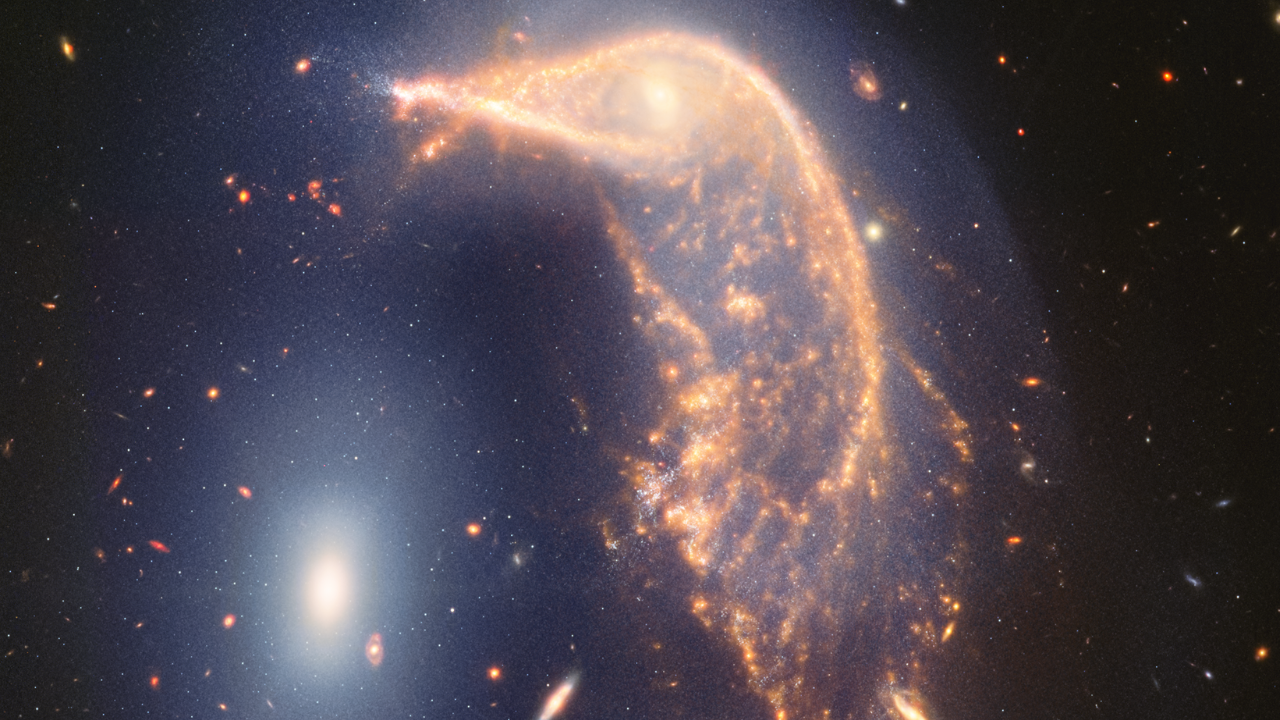1 min read
Interacting Galaxies Arp 142 (MIRI Image)
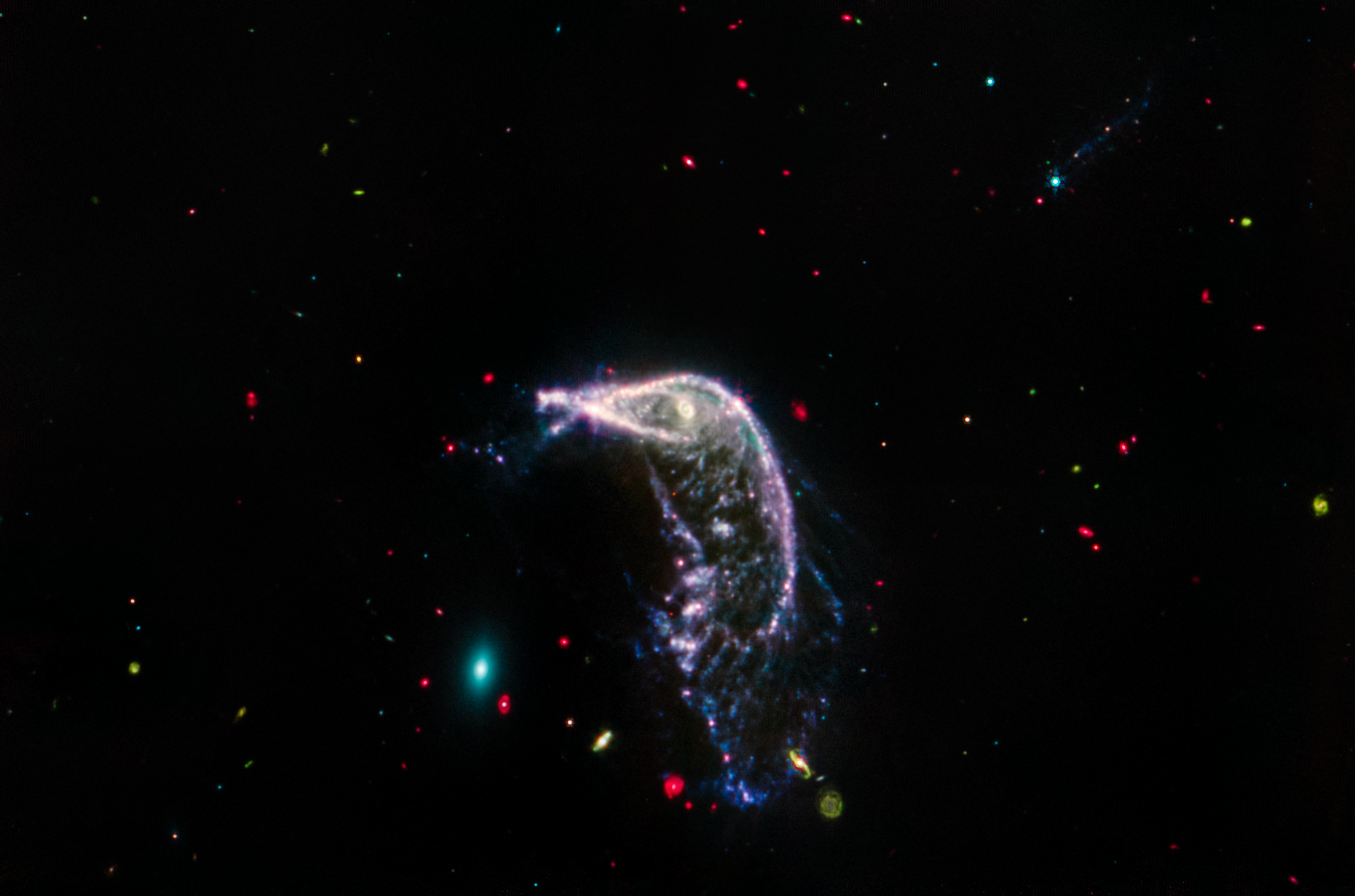
Webb’s mid-infrared view of interacting galaxies Arp 142 seems to sing in primary colors. The background of space is like a yawning darkness speckled with bright, multi-colored beads.
This image was taken by MIRI, the telescope’s Mid-Infrared Instrument, which astronomers use to study cooler and older objects, dust, and extremely distant galaxies.
Here, the Egg appears as an exceptionally small teal oval with gauzy layers. Mid-infrared light predominantly shows the oldest stars in the elliptical galaxy, which has lost or used up most of its gas and dust. This is why the view is so different from the combined image, which includes near-infrared light.
At right, the Penguin’s shape is relatively unchanged. The MIRI image shows all the gas and dust that has been distorted and stretched, as well as the smoke-like material, in blue, that includes carbon-containing molecules, known as polycyclic aromatic hydrocarbons.
Next, look for the edge-on galaxy cataloged PGC 1237172 at the top right — a dim, hazy line. Find it by looking for the bright blue star with small diffraction spikes positioned over the top of its left edge. This galaxy nearly disappears in mid-infrared light because its stars are very young and the galaxy isn’t overflowing with dust.
Now, scan the full image left to right to spot distant galaxies in the background. The red objects are encased in thick layers of dust. Some are spiral galaxies and others are more distant galaxies that can only be detected as dots or smudges. Green galaxies are laden with dust and are farther away. Bluer galaxies are closer. Zoom in carefully to see if a blue dot has miniscule diffraction spikes — those are stars, not galaxies.
About the Object
- R.A. PositionR.A. PositionRight ascension – analogous to longitude – is one component of an object's position.09:37:43.09
- Dec. PositionDec. PositionDeclination – analogous to latitude – is one component of an object's position.02:45:47.01
- ConstellationConstellationOne of 88 recognized regions of the celestial sphere in which the object appears.Hydra
- DistanceDistanceThe physical distance from Earth to the astronomical object. Distances within our solar system are usually measured in Astronomical Units (AU). Distances between stars are usually measured in light-years. Interstellar distances can also be measured in parsecs.326 million light-years
- DimensionsDimensionsThe physical size of the object or the apparent angle it subtends on the sky.Image is about 3.4 arcmin across (about 322,000 light-years)
About the Data
- Data DescriptionData DescriptionProposal: A description of the observations, their scientific justification, and the links to the data available in the science archive.
Science Team: The astronomers who planned the observations and analyzed the data. "PI" refers to the Principal Investigator.This image was created with Webb data from proposal: 6564 (M. Marin); Image Processing: Joseph DePasquale (STScI)
- InstrumentInstrumentThe science instrument used to produce the data.MIRI
- Exposure DatesExposure DatesThe date(s) that the telescope made its observations and the total exposure time.May 6, 2024
- FiltersFiltersThe camera filters that were used in the science observations.F770W, F1000W, F1500W
- Object NameObject NameA name or catalog number that astronomers use to identify an astronomical object.Arp 142, NGC 2396/2397
- Object DescriptionObject DescriptionThe type of astronomical object.Interacting Galaxies
- Release DateJuly 12, 2024
- Science ReleaseVivid Portrait of Interacting Galaxies Marks Webb’s Second Anniversary
- CreditImage: NASA, ESA, CSA, STScI

These images are a composite of separate exposures acquired by the James Webb Space Telescope using the MIRI instrument. Several filters were used to sample narrow and broad wavelength ranges. The color results from assigning different hues (colors) to each monochromatic (grayscale) image associated with an individual filter. In this case, the assigned colors are: Red: F1500W Green: F1000W Blue: F770W.
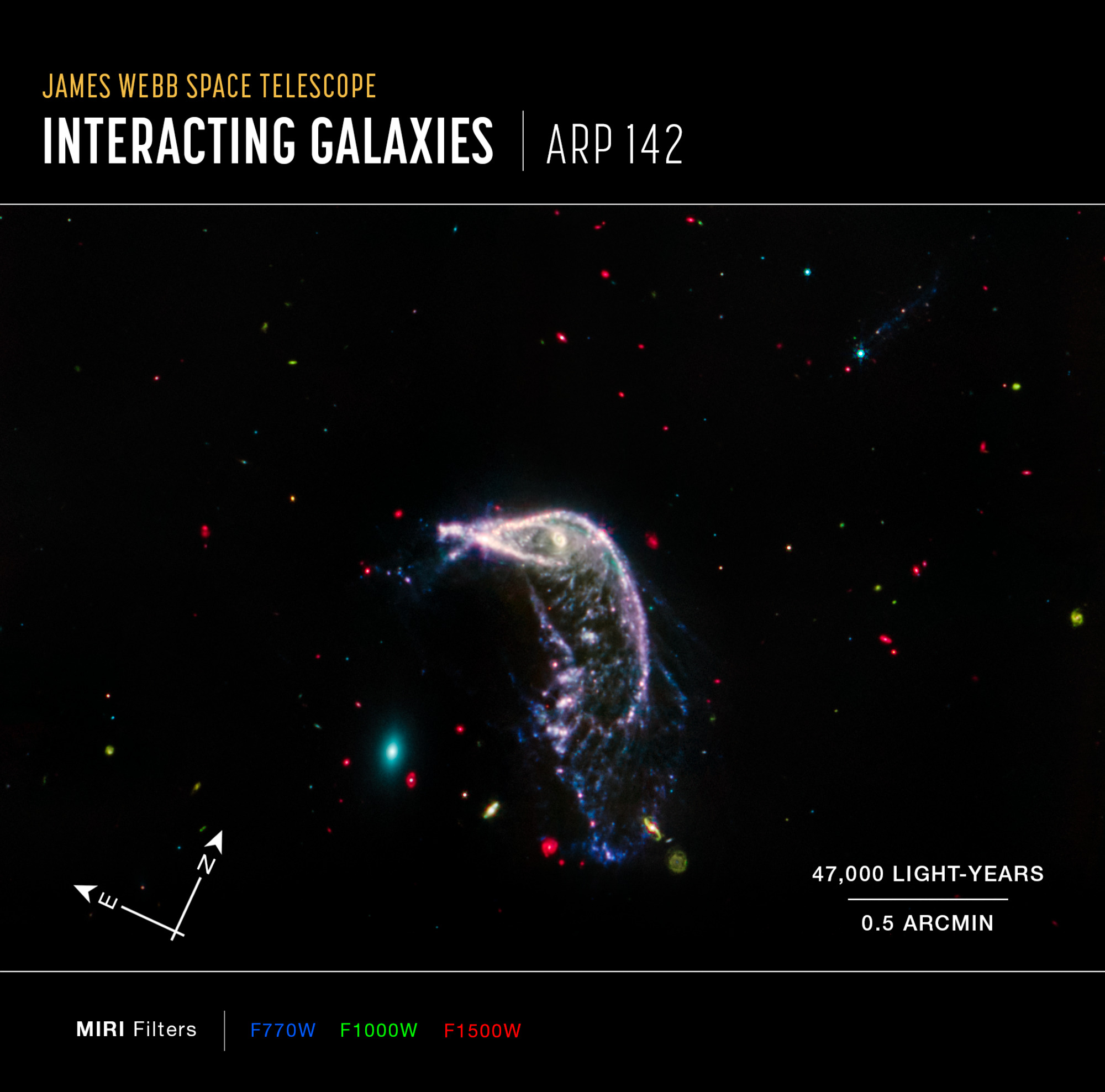
Related Images & Videos
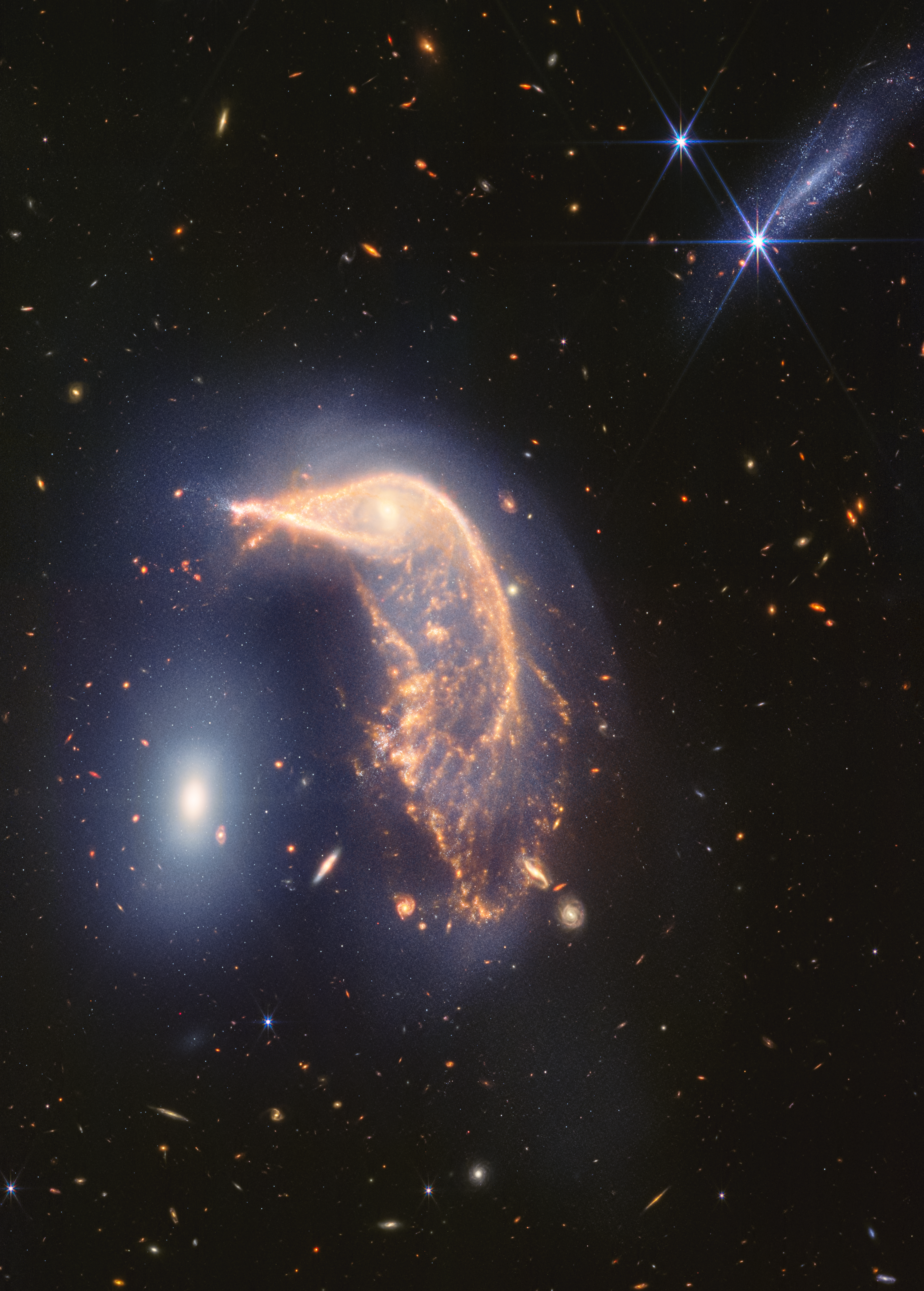
Interacting Galaxies Arp 142 (NIRCam and MIRI Image)
This “penguin party” is loud! The distorted spiral galaxy at center, the Penguin, and the compact elliptical galaxy at left, the Egg, are locked in an active embrace. A new near- and mid-infrared image from the James Webb Space Telescope, taken to mark its second year of...
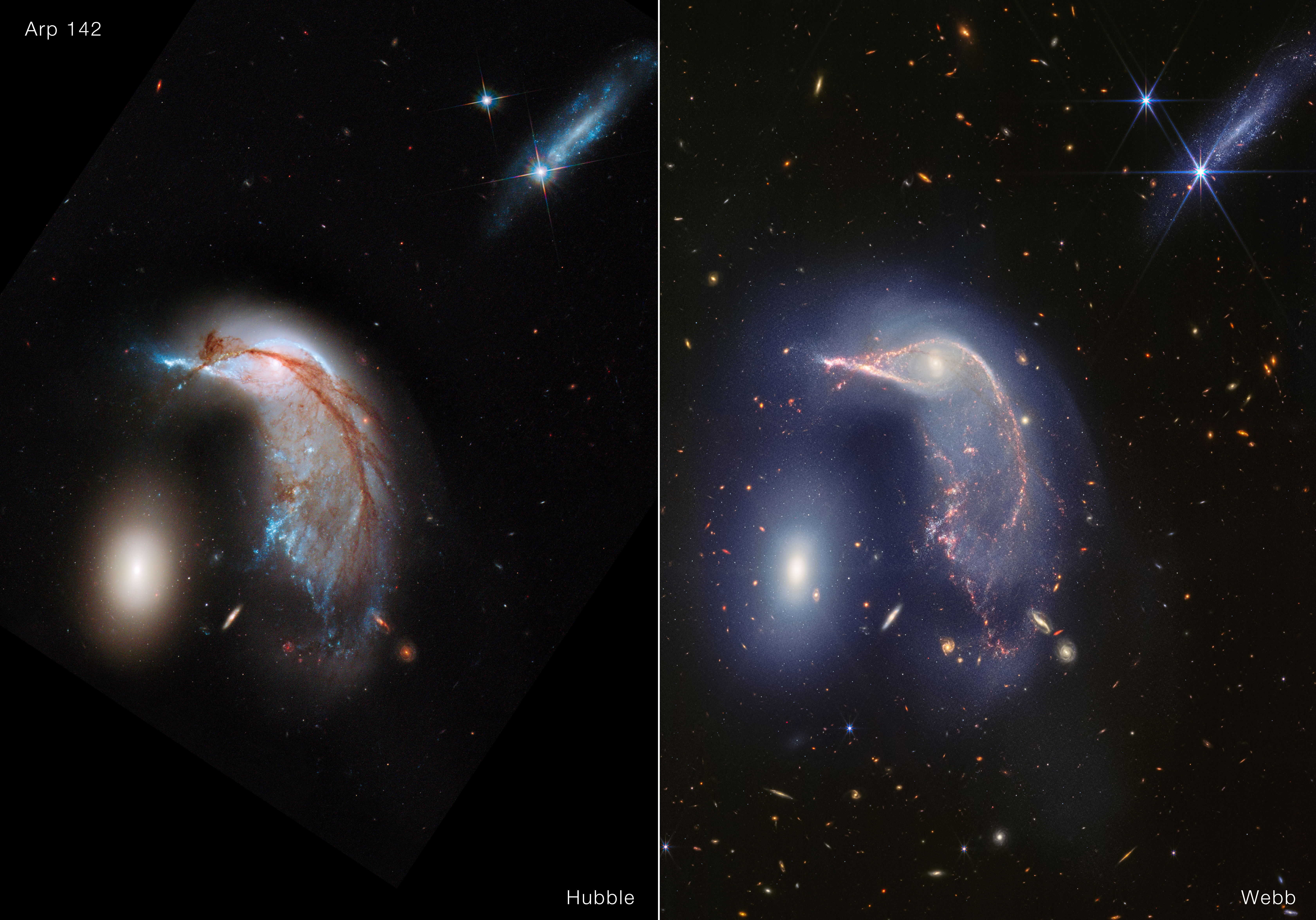
Interacting Galaxies Arp 142 (Hubble and Webb Image)
Two penguins, two eggs — two very different color schemes! The Hubble Space Telescope captured visible light when observing Arp 142, nicknamed the Penguin and the Egg, in 2013 . At right is the James Webb Space Telescope’s near-infrared light view of the same region. Both images...
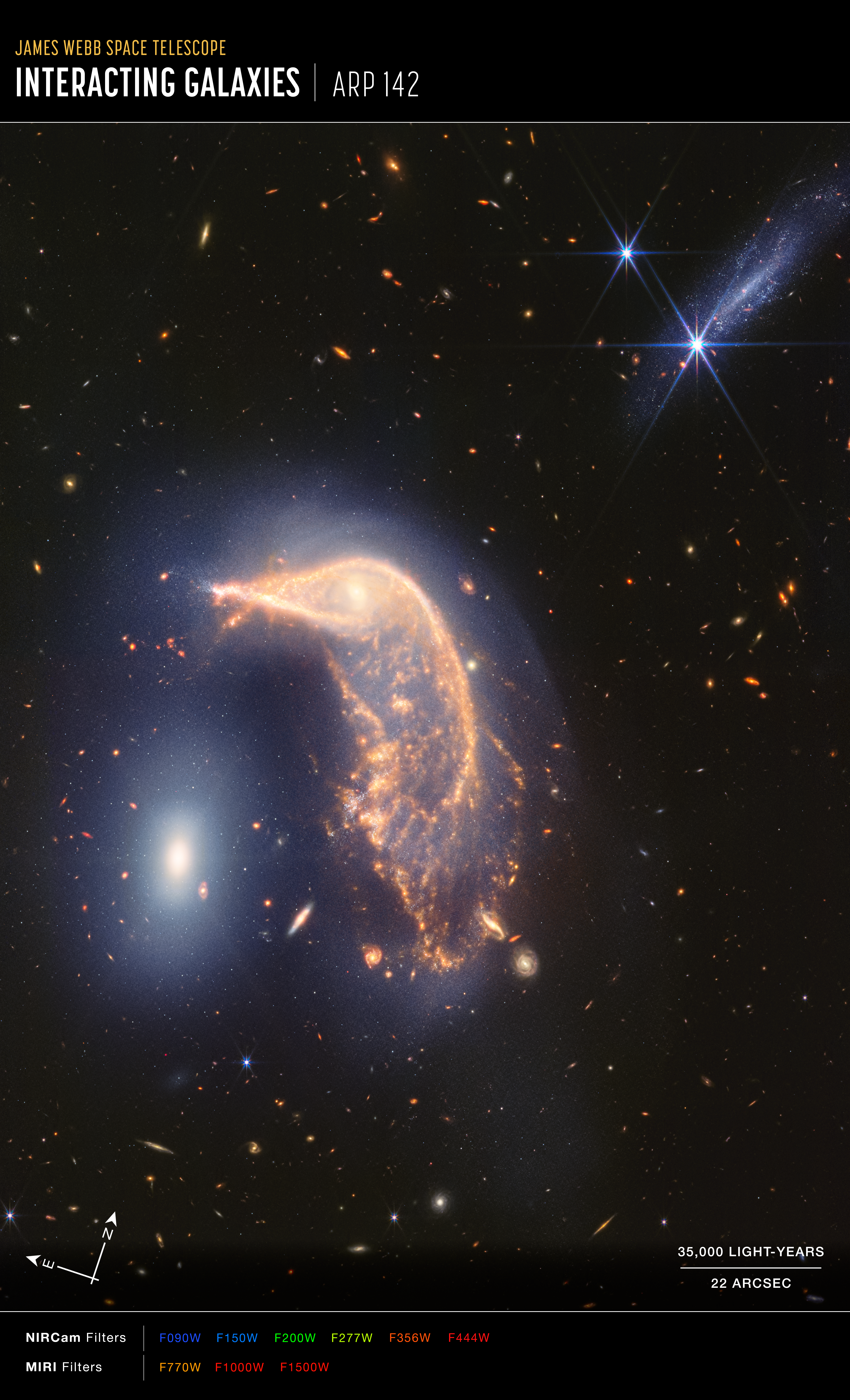
Interacting Galaxies Arp 142 (NIRCam and MIRI Compass Image)
This image of interacting galaxies Arp 142, captured by the James Webb Space Telescope’s NIRCam (Near-Infrared Camera) and MIRI (Mid-Infrared Instrument), shows compass arrows, scale bar, and color key for reference. The north and east compass arrows show the orientation of the...
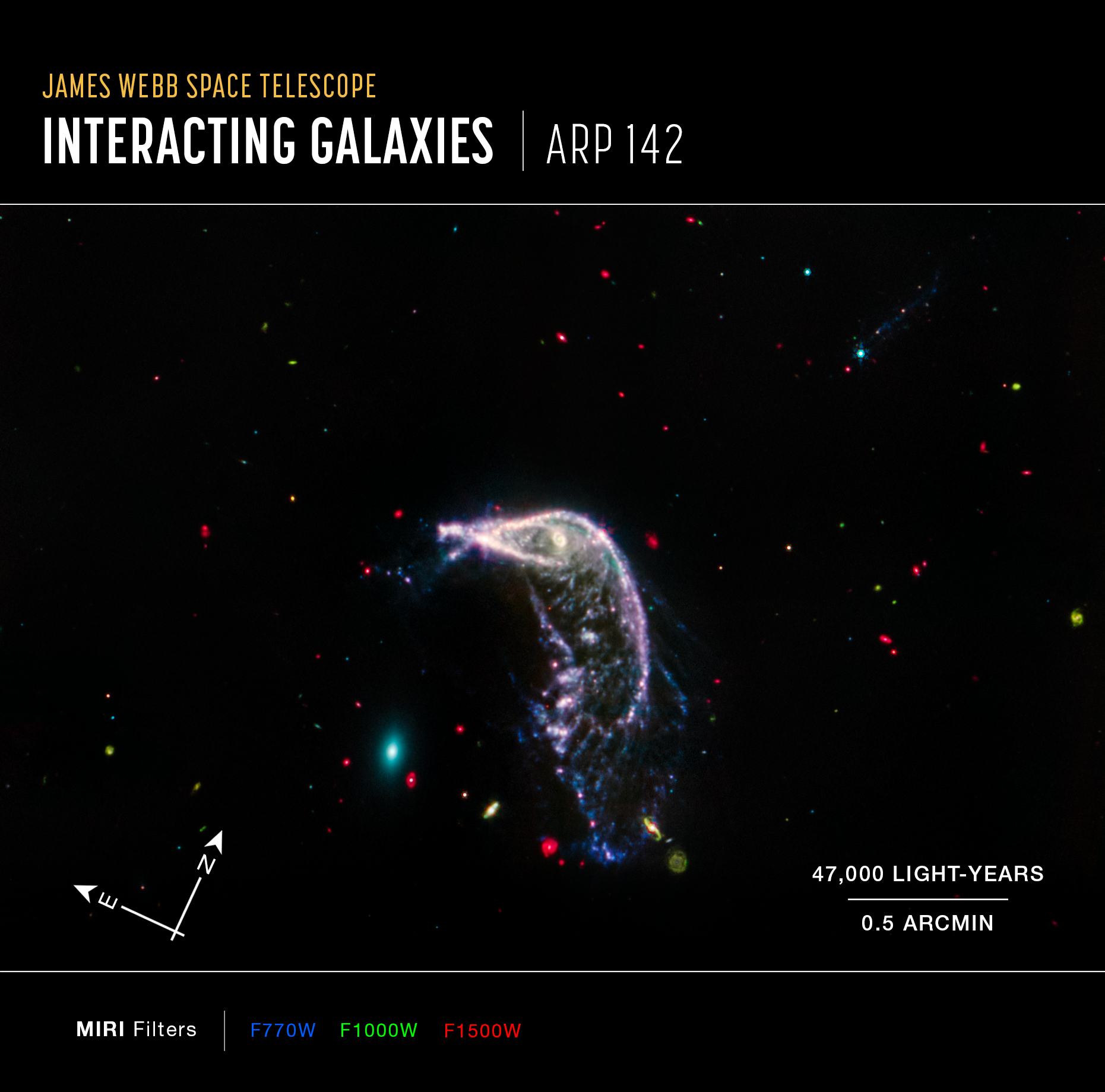
Interacting Galaxies Arp 142 (MIRI Compass Image)
This image of interacting galaxies Arp 142, captured by the James Webb Space Telescope’s MIRI (Mid-Infrared Instrument), shows compass arrows, scale bar, and color key for reference. The north and east compass arrows show the orientation of the image on the sky. Note that the...
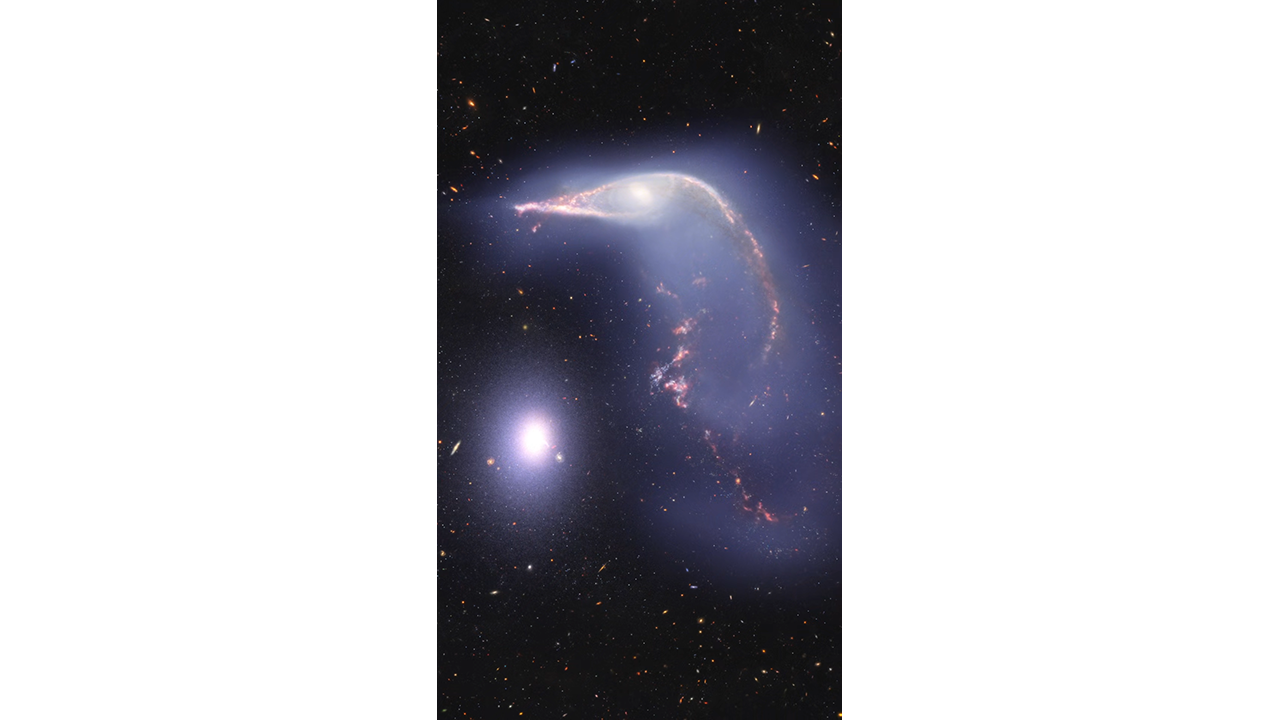
Arp 142 Visualization
This visualization examines the three-dimensional structure of Arp 142, a pair of interacting galaxies nicknamed the Penguin and the Egg, as seen in near-infrared light by the James Webb Space Telescope. The Penguin, a spiral galaxy cataloged as NGC 2936, has passed by the Egg,...
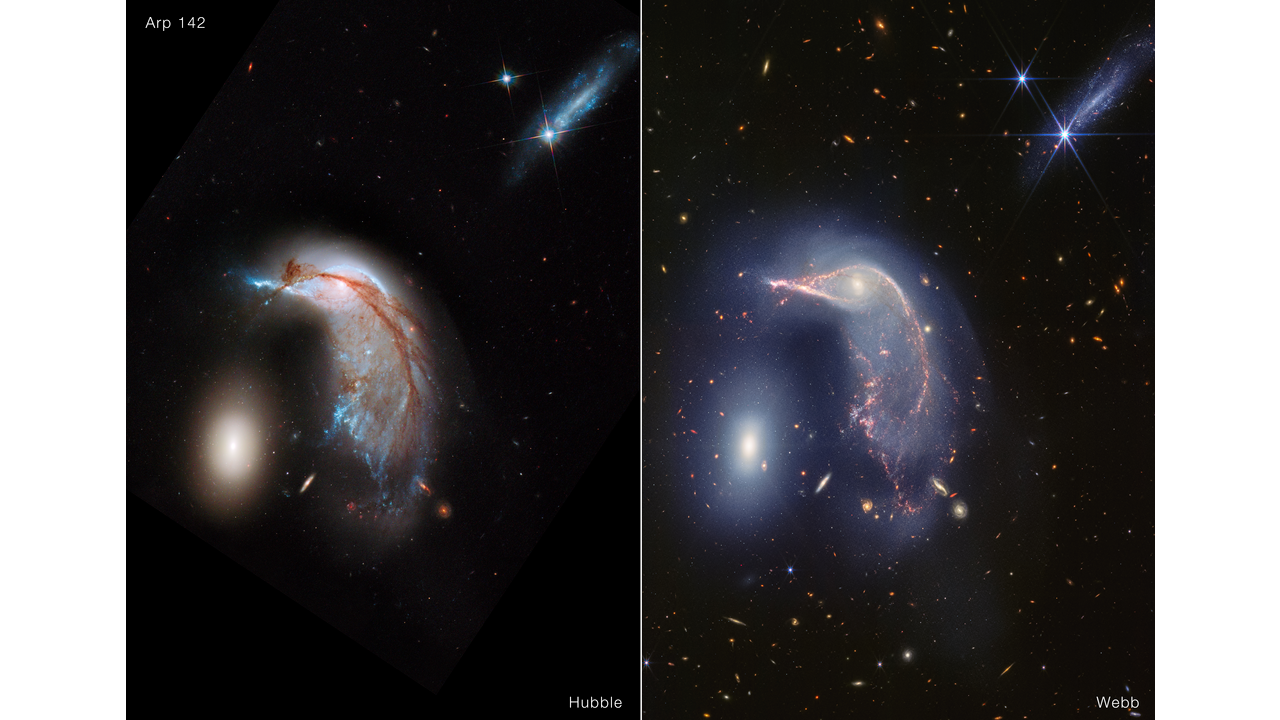
Arp 142 Hubble to Webb Fade
This video compares images of two interacting galaxies cataloged Arp 142, nicknamed the Penguin and the Egg. The first image is in visible light, and was captured by the Hubble Space Telescope’s Wide Field Camera 3 (WFC3). The second shows near-infrared light observed by the...
Share
Details
Laura Betz
NASA’s Goddard Space Flight Center
Greenbelt, Maryland
laura.e.betz@nasa.gov
NASA, ESA, CSA, STScI


























